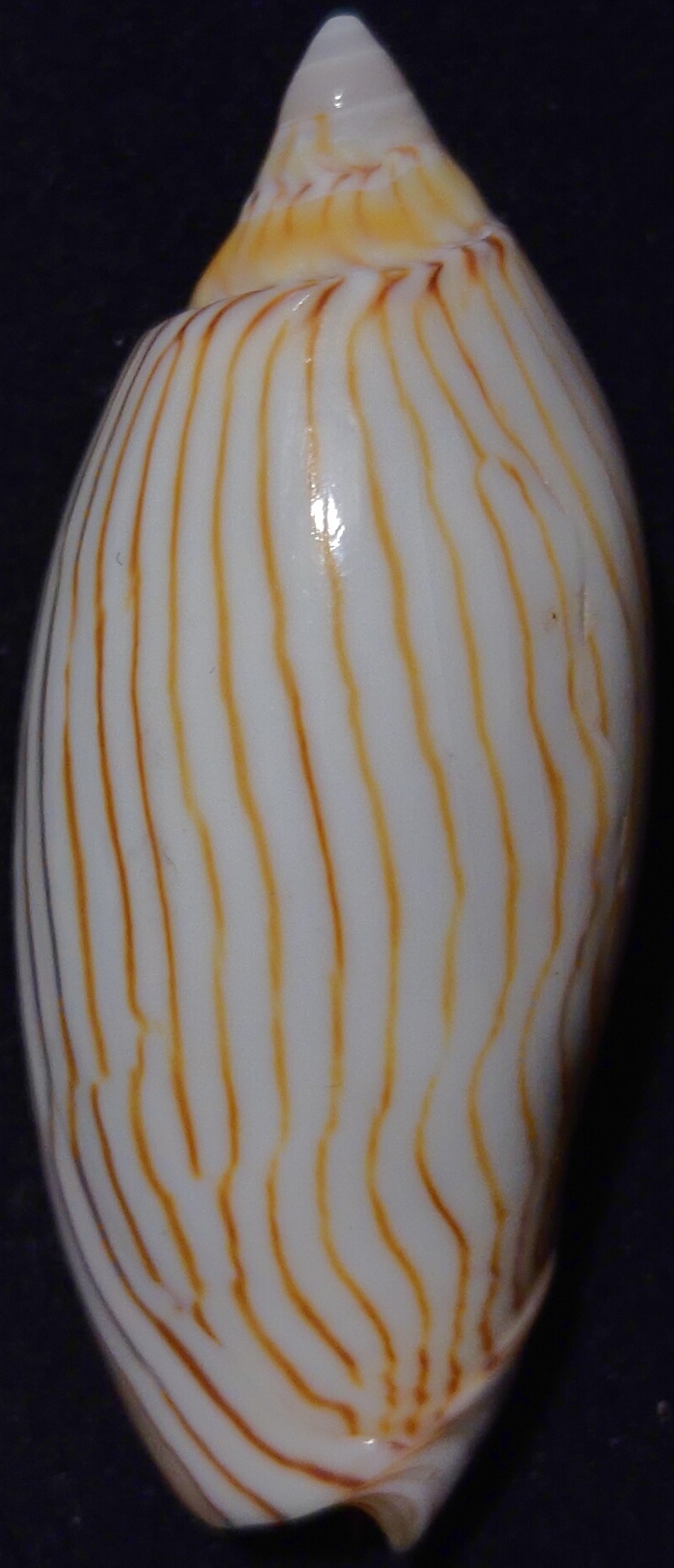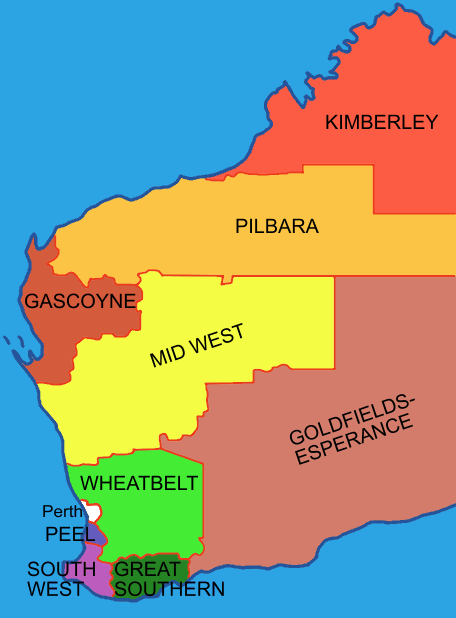|
Amoria Jamrachii
''Amoria jamrachii'' is a species of sea snail, a marine gastropod mollusk in the family (biology), family Volutidae, the volutes. It was named after Charles Jamrach, an animal dealer in London, by Dr. John Edward Gray, Keeper of Zoology at the British Museum. Subspecies * ''Amoria jamrachi condei'' Bail & Limpus, 2001 * ''Amoria jamrachi jamrachi'' Gray, 1864: represented as ''Amoria jamrachii'' Gray, 1864 (alternate representation) Description The length of the shell varies between 45 mm and 70 mm. (Original description) This species closely resembles ''Amoria turneri'', however, it exhibits several key differences. The shell is thinner, the stripes are narrower and more widely spaced, and the sutural spots are either very small or entirely absent. The shell is oblong-ovate, whitish, and tinged with fulvous. It is longitudinally striated with brown. The spire is conical and acute, but relatively short, with channeled sutures. The aperture is relatively wide a ... [...More Info...] [...Related Items...] OR: [Wikipedia] [Google] [Baidu] |
John Edward Gray
John Edward Gray (12 February 1800 – 7 March 1875) was a British zoologist. He was the elder brother of zoologist George Robert Gray and son of the pharmacologist and botanist Samuel Frederick Gray (1766–1828). The same is used for a zoological name. Gray was keeper of zoology at the British Museum in London from 1840 until Christmas 1874, before the natural history holdings were split off to the Natural History Museum. He published several catalogues of the museum collections that included comprehensive discussions of animal groups and descriptions of new species. He improved the zoological collections to make them amongst the best in the world. Biography Gray was born in Walsall, but his family soon moved to London, where Gray studied medicine. He assisted his father in writing ''The Natural Arrangement of British Plants'' (1821). After being blackballed by the Linnean Society of London, Gray shifted his interest from botany to zoology. He began his zoological ... [...More Info...] [...Related Items...] OR: [Wikipedia] [Google] [Baidu] |
Amoria Jamrachi B
Amoria may refer to: Biology * ''Amoria'' (gastropod), a taxonomic genus of medium-sized predatory marine gastropod * A synonym of the genus ''Trifolium Clovers, also called trefoils, are plants of the genus ''Trifolium'' (), consisting of about 300 species of flowering plants in the legume family Fabaceae originating in Europe. The genus has a cosmopolitan distribution with the highest diversity ...'' (clovers) Other * Amoria Neal-Tysor, basketball player on the 2021–22 Mercer Bears women's basketball team * Oil Tanker ''Amoria'', of the Iraqi Oil Tankers Company * A schooner shipwrecked in Lake Pasteur, Quebec, Canada, in 1922 * A location in ''Dungeons & Dragons''; see {{disambiguation ... [...More Info...] [...Related Items...] OR: [Wikipedia] [Google] [Baidu] |
Species
A species () is often defined as the largest group of organisms in which any two individuals of the appropriate sexes or mating types can produce fertile offspring, typically by sexual reproduction. It is the basic unit of Taxonomy (biology), classification and a taxonomic rank of an organism, as well as a unit of biodiversity. Other ways of defining species include their karyotype, DNA sequence, morphology (biology), morphology, behaviour, or ecological niche. In addition, palaeontologists use the concept of the chronospecies since fossil reproduction cannot be examined. The most recent rigorous estimate for the total number of species of eukaryotes is between 8 and 8.7 million. About 14% of these had been described by 2011. All species (except viruses) are given a binomial nomenclature, two-part name, a "binomen". The first part of a binomen is the name of a genus to which the species belongs. The second part is called the specific name (zoology), specific name or the specific ... [...More Info...] [...Related Items...] OR: [Wikipedia] [Google] [Baidu] |
Sea Snail
Sea snails are slow-moving marine (ocean), marine gastropod Mollusca, molluscs, usually with visible external shells, such as whelk or abalone. They share the Taxonomic classification, taxonomic class Gastropoda with slugs, which are distinguished from snails primarily by the absence of a visible Gastropod shell, shell. Definition Determining whether some gastropods should be called sea snails is not always easy. Some species that live in brackish water (such as certain Neritidae, neritids) can be listed as either freshwater snails or marine snails, and some species that live at or just above the high tide level (for example, species in the genus ''Truncatella (gastropod), Truncatella'') are sometimes considered to be sea snails and sometimes listed as land snails. Anatomy Sea snails are a very large and diverse group of animals. Most snails that live in salt water respire using a gill or gills; a few species, though, have a lung, are intertidal, and are active only at low tide w ... [...More Info...] [...Related Items...] OR: [Wikipedia] [Google] [Baidu] |
Gastropod
Gastropods (), commonly known as slugs and snails, belong to a large Taxonomy (biology), taxonomic class of invertebrates within the phylum Mollusca called Gastropoda (). This class comprises snails and slugs from saltwater, freshwater, and from the land. There are many thousands of species of sea snails and sea slug, slugs, as well as freshwater snails, freshwater limpets, land snails and slugs. The class Gastropoda is a diverse and highly successful class of mollusks within the phylum Mollusca. It contains a vast total of named species, second only to the insects in overall number. The fossil history of this class goes back to the Furongian, Late Cambrian. , 721 family (taxonomy), families of gastropods are known, of which 245 are extinct and appear only in the fossil record, while 476 are currently neontology, extant living fossil, with or without a fossil record. Gastropoda (previously known as univalves and sometimes spelled "Gasteropoda") are a major part of the phylum Mo ... [...More Info...] [...Related Items...] OR: [Wikipedia] [Google] [Baidu] |
Mollusk
Mollusca is a phylum of protostomic invertebrate animals, whose members are known as molluscs or mollusks (). Around 76,000 extant species of molluscs are recognized, making it the second-largest animal phylum after Arthropoda. The number of additional fossil species is estimated between 60,000 and 100,000, and the proportion of undescribed species is very high. Many taxa remain poorly studied. Molluscs are the largest marine phylum, comprising about 23% of all the named marine organisms. They are highly diverse, not just in size and anatomical structure, but also in behaviour and habitat, as numerous groups are freshwater and even terrestrial species. The phylum is typically divided into 7 or 8 taxonomic classes, of which two are entirely extinct. Cephalopod molluscs, such as squid, cuttlefish, and octopuses, are among the most neurologically advanced of all invertebrates—and either the giant squid or the colossal squid is the largest known extant i ... [...More Info...] [...Related Items...] OR: [Wikipedia] [Google] [Baidu] |
Family (biology)
Family (, : ) is one of the eight major hierarchical taxonomic ranks in Linnaean taxonomy. It is classified between order and genus. A family may be divided into subfamilies, which are intermediate ranks between the ranks of family and genus. The official family names are Latin in origin; however, popular names are often used: for example, walnut trees and hickory trees belong to the family Juglandaceae, but that family is commonly referred to as the "walnut family". The delineation of what constitutes a family—or whether a described family should be acknowledged—is established and decided upon by active taxonomists. There are not strict regulations for outlining or acknowledging a family, yet in the realm of plants, these classifications often rely on both the vegetative and reproductive characteristics of plant species. Taxonomists frequently hold varying perspectives on these descriptions, leading to a lack of widespread consensus within the scientific community ... [...More Info...] [...Related Items...] OR: [Wikipedia] [Google] [Baidu] |
Volutidae
Volutidae, common name volutes, are a taxonomic family of predatory sea snails that range in size from 9 mm to over 500 mm. They are marine gastropod mollusks. Most of the species have no operculum. Distribution This family of sea snails are found mainly in tropical seas, though some species also inhabit the waters of the polar circles. Description The large head has the eyes sessile on the sides below the base of the tentacles. The tentacles are far apart, united by a broad veil over the head. The mantle is sometimes greatly developed, covering the sides of the shell. The siphon is recurved, short, with auricles on each side of the base. The foot is very large, partly hiding the shell. There is no operculum. The shell shows distinct plaits on the columella. The apex of the spire is mamillated. The shells have an elongated aperture in their first whorl and an inner lip characterised by a number of deep plaits. The family of Volutidae comprises a suite of large sh ... [...More Info...] [...Related Items...] OR: [Wikipedia] [Google] [Baidu] |
Charles Jamrach
Charles Jamrach (born Johann Christian Carl Jamrach; March 1815 – 6 September 1891) was a leading dealer in wildlife, birds and shells in 19th-century London. He owned an exotic pet store on the Ratcliffe Highway in east London – at the time the largest such shop in the world. Jamrach's nearest rival was Edward Cross, who ran a menagerie at Exeter Exchange on the Strand. Jamrach was born in Germany (either in Hamburg or Memel). His father, Johann Gottlieb Jamrach, was chief of the Hamburg river police (the ''Wasserschutzpolizei''), whose contacts with sailors enabled him to build up a trade as a dealer in birds and wild animals, establishing branches in Antwerp and London. Charles Jamrach moved to London and took over that branch of the business after his father's death in circa 1840. He became a leading importer, breeder, and exporter of animals, selling to noblemen, zoos, menageries and circus owners, and buying from ships docking in London and nearby ports, with agents ... [...More Info...] [...Related Items...] OR: [Wikipedia] [Google] [Baidu] |
Indonesia
Indonesia, officially the Republic of Indonesia, is a country in Southeast Asia and Oceania, between the Indian Ocean, Indian and Pacific Ocean, Pacific oceans. Comprising over List of islands of Indonesia, 17,000 islands, including Sumatra, Java, Sulawesi, and parts of Borneo and New Guinea, Indonesia is the world's largest archipelagic state and the List of countries and dependencies by area, 14th-largest country by area, at . With over 280 million people, Indonesia is the world's List of countries and dependencies by population, fourth-most-populous country and the most populous Islam by country, Muslim-majority country. Java, the world's List of islands by population, most populous island, is home to more than half of the country's population. Indonesia operates as a Presidential system, presidential republic with an elected People's Consultative Assembly, legislature and consists of Provinces of Indonesia, 38 provinces, nine of which have Autonomous administrative divisi ... [...More Info...] [...Related Items...] OR: [Wikipedia] [Google] [Baidu] |
Northwest Australia
The North West, North West Coast, North Western Australia and North West Australia, are usually informal names for the northern regions of the State of Western Australia. However, some conceptions of "North West Australia" have included adjoining parts of the Northern Territory (NT) – or even the entire NT (see below). It has been described as "best of outback". Major offshore islands include Barrow Island, Monte Bello Islands and the Dampier Archipelago. Apart from land areas, the term "North West" is also used for seabed oil and gas fields of the North West Shelf. Definitions The whole area north of the Murchison River was designated the North District by land regulations gazetted in 1862 by the government of the Colony of Western Australia. From February 1865, the North District was officially administered by a Government Resident, Robert John Sholl, initially based in Camden Harbour, then moved to Roebourne in November 1865. The North-West Land Division, ... [...More Info...] [...Related Items...] OR: [Wikipedia] [Google] [Baidu] |







